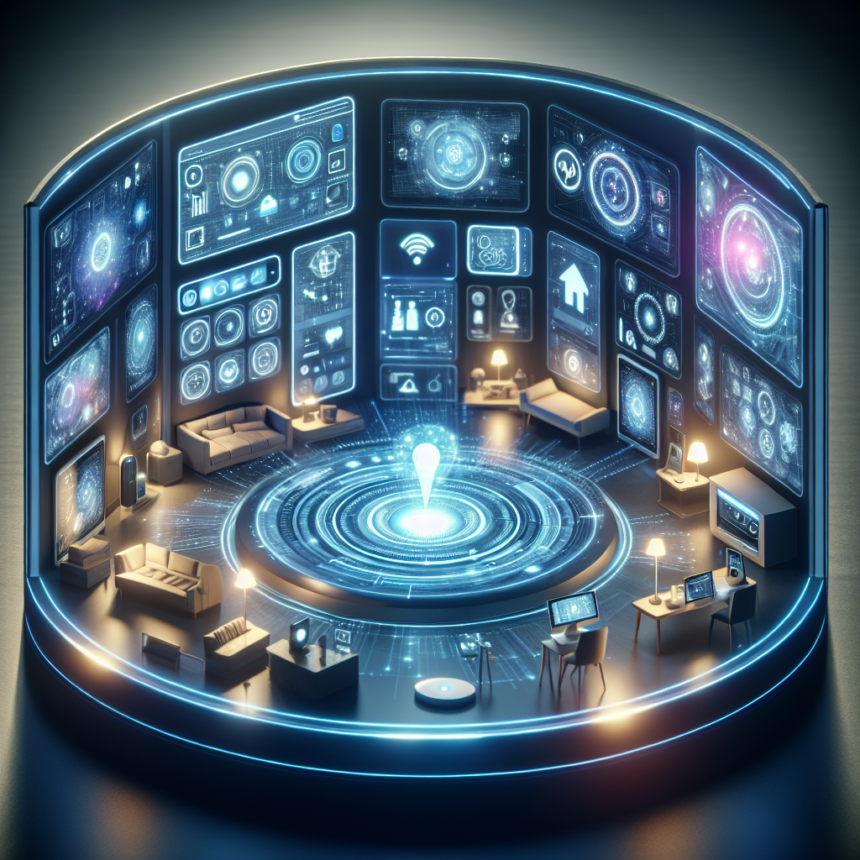The Internet of Things (IoT) is revolutionizing the way we interact with our living spaces, paving the path for the future of smart homes. As various devices connect to the internet, they communicate and work together, making life more convenient and efficient for homeowners. With advancements in technology and a growing demand for automation, our homes are gradually becoming more intelligent infrastructures that cater to our needs, preferences, and lifestyles.
The Rise of Smart Homes
Our homes are evolving from simple spaces of shelter into sophisticated ecosystems that harness smart technology to enhance comfort, security, and sustainability. Smart homes utilize IoT devices such as smart thermostats, lighting systems, security cameras, and appliances that can be remotely controlled through smartphones, tablets, or voice-activated assistants like Amazon Alexa and Google Assistant. This transformation is not just about convenience; it’s also about energy efficiency and improving overall quality of life.
Energy Efficiency and Sustainability
One of the most significant aspects of IoT in smart homes is the emphasis on energy efficiency. Smart thermostats, such as Nest, learn user habits and adjust temperatures automatically to save energy without sacrificing comfort. Smart lighting systems can turn on or off based on occupancy or natural light levels, reducing the need for excess electricity when unnecessary. Furthermore, innovative appliances now offer energy consumption analytics, allowing homeowners to track and reduce their energy usage over time.
Enhanced Security and Safety
Safety is paramount, and smart homes enhance security through innovative technologies. IoT security devices, including smart doorbells, surveillance cameras, and motion sensors, allow homeowners to monitor their property in real-time, provide alerts about unusual activity, and even give remote access to trusted visitors. Additionally, smart smoke detectors and carbon monoxide alarms can automatically alert homeowners to dangers, improving overall safety.
Automation and Convenience
The automation capabilities powered by IoT devices make everyday tasks significantly more manageable. For instance, smart kitchen appliances enable homeowners to pre-heat ovens, brew coffee, or even start dishwashers remotely. Voice-activated systems allow for hands-free control over various devices, creating a seamless experience. Smart home hubs consolidate multiple devices into one centralized platform, giving homeowners easy access to management and control through a single app or command.
Integration with Other Technologies
The future of smart homes doesn’t stop at the devices themselves. As IoT technology continues to evolve, integration with artificial intelligence (AI) and machine learning will offer personalized experiences tailored to individual needs. For example, smart home systems will learn routines and preferences, adjusting the environment automatically to fit the homeowner’s lifestyle. Imagine a home where the lights adjust based on your mood, and your music playlist transitions into your evening wind-down routine.
Health and Wellness
Smart homes now extend to promoting health and wellness, integrating devices that monitor indoor air quality, detect allergens, and even manage water usage. Wearable devices that track personal health metrics can sync with smart home systems, providing insights on how to improve your living environment for better health. For instance, if a smart device detects poor air quality, it may activate an air purifier or alert the homeowner to take action.
The Future of Living
The future of living in smart homes is not just about technology; it encapsulates a lifestyle focused on convenience, sustainability, and efficiency. As IoT devices become more affordable and accessible, more households are likely to adopt these smart technologies. Emerging innovations, such as smart cities and smart grids, will create interconnected urban environments that enhance the quality of life and promote sustainable living.
FAQs
Q: What is the Internet of Things (IoT)?
A: The Internet of Things refers to the network of physical devices connected to the internet, which can collect and exchange data to enhance functionality and efficiency.
Q: How can IoT devices improve energy efficiency in homes?
A: IoT devices can monitor energy usage, optimize settings based on occupancy or time of day, and reduce waste, leading to significant energy savings.
Q: Are smart home devices secure?
A: While smart home devices offer increased security features, they can also be vulnerable to cyber threats. Ensuring devices are regularly updated and using strong passwords can enhance security.
Q: Can smart home devices communicate with one another?
A: Yes, many smart home devices can communicate with each other and can be controlled through a central hub or app, creating seamless automation and integration.
Q: Will smart homes be cost-effective in the long run?
A: While the initial investment in smart home technologies may be significant, the potential savings in energy costs, increased home value, and enhanced convenience can make them cost-effective in the long run.
In conclusion, the transformation of our living spaces through IoT technologies is more than just an upgrade; it’s a glimpse into the future of living—one that caters to our every need while promoting sustainability and efficiency. Embracing these changes will undoubtedly shape how we experience home life for generations to come.









